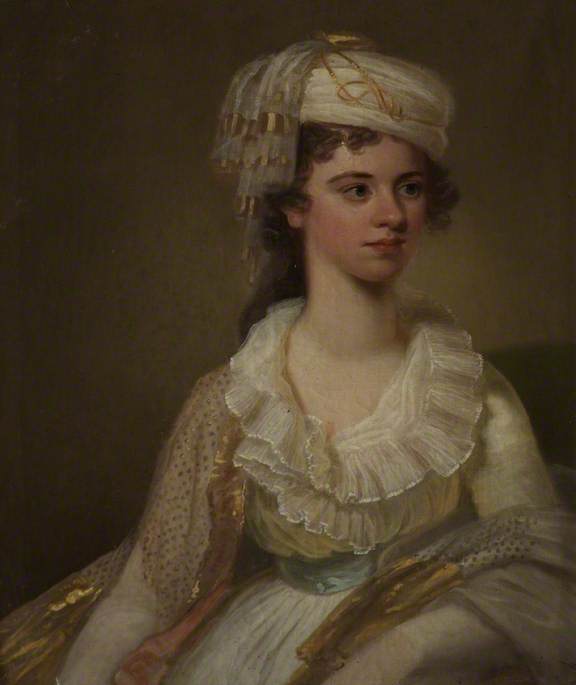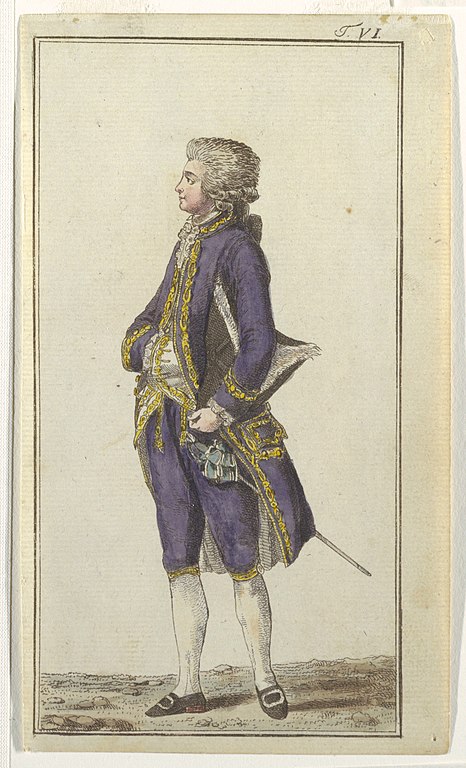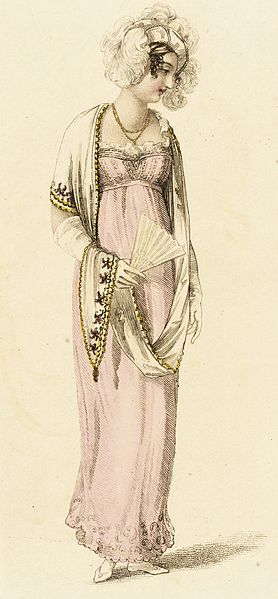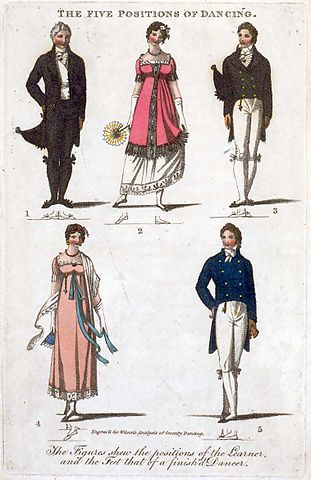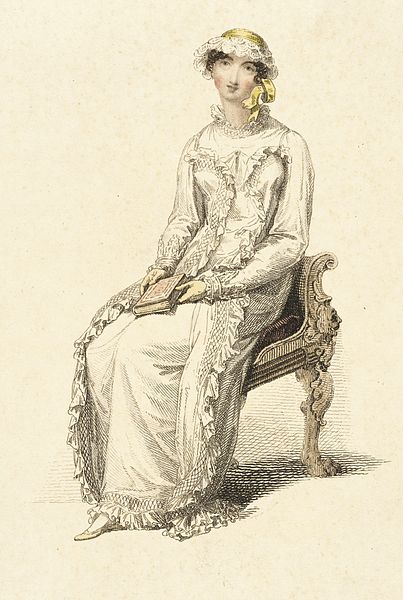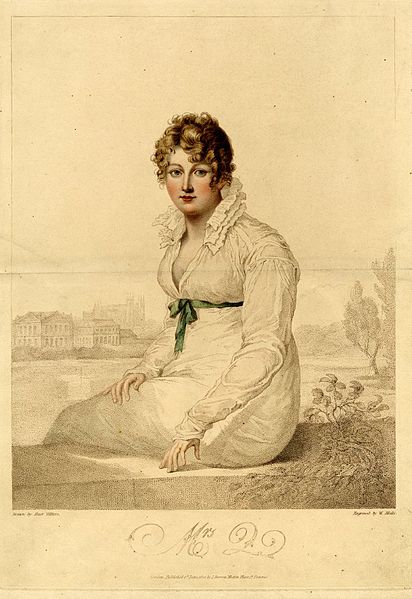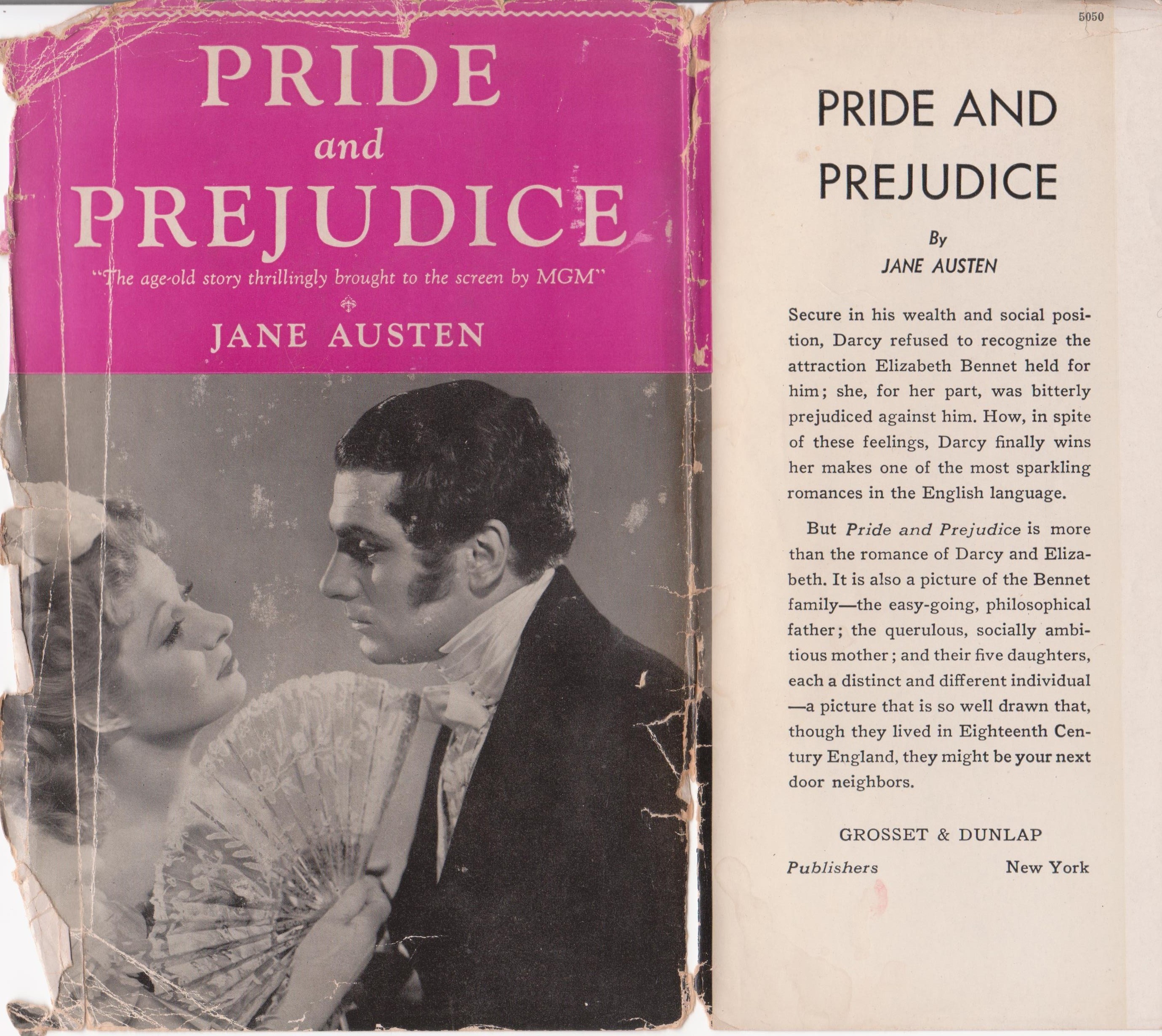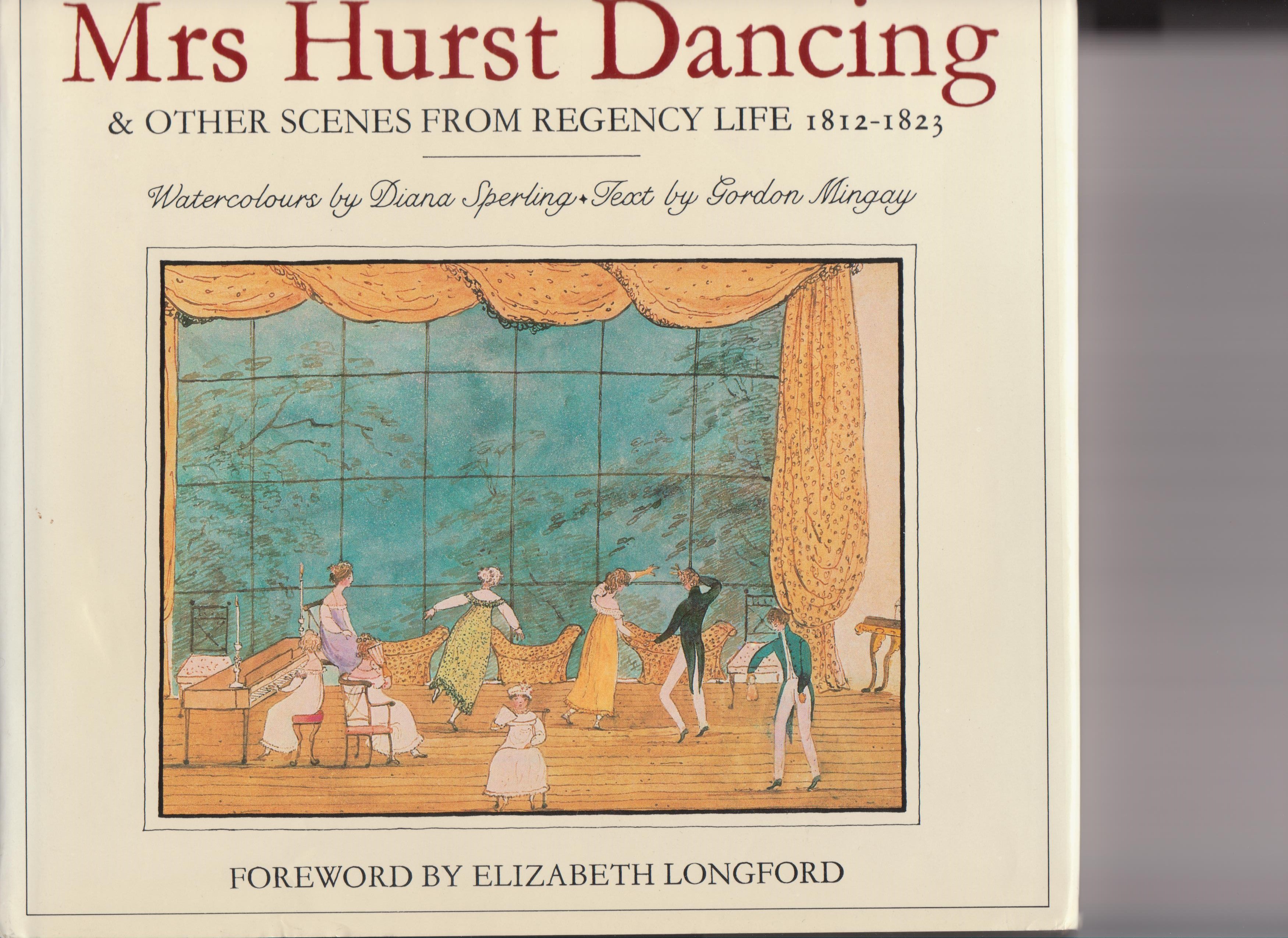
In Jane’s surviving letters, there are tantalizing hints of political awareness. It must be remembered that the surviving letters are a fraction of those actually written-Cassandra destroyed many more. It is a mistake to assume, based on the surviving letters, that Jane did not more fully express herself on political subjects and matters. In my opinion, it is also a mistake to assume a completely one-sided view on her part.
Let’s take a look for some hints at political views in Jane Austen’s surviving letters ( JANE AUSTEN’S LETTERS, ed. Deirdre LeFaye):
Letter 29 (p. 69) Reference to a threatened act of Parliament as not an issue of concern: per Ms. LeFaye, this referred possibly to measures in regard to alleviating the distress of the winter of 1800-1801 (one such measure involved fixing the price of wheat, which was vigorously opposed.)
Letter 61 (p. 154) Reference to politics (electioneering, canvassing)-Jane reported that, although offered the opportunity to run unopposed, Mr. Thistlewaite declined to run due to previous electioneering costs.
Letter 72 (p. 186) Reference to Weald of Kent-Canal Bill-Jane congratulates Edward because she read that the bill was delayed. “There is always something to be hoped from Delay – .”
Letter 79 (p. 202) Jane asked Cassandra if she could find out if “Northamptonshire is a Country of Hedgerows….” – this is a reference to enclosure (common lands being acquired and enclosed, usually for sheep, which affected not only the livelihood of others no longer able to access this land for open field farming or shared grazing, but also affected tithing (land in lieu of yearly tithes). [Enclosure was bad if for superficial reasons, such as improving a view; good if it will increase profit or efficiency, per Celia Eston’s article in PERSUASIONS.]
Letter 96 (p. 252) Reference to Napoleonic War –Jane’s letter referred to speeches in parliament: 11/4/1814: Marquis Wellesley, in the words of Mr. Pitt, indicated that England saved herself and others; 11/8/1814: The House of Lords thanks to Marquis Wellesley for skill and ability in action subsequent to battle of Vittoria (this reflected the Tory desire to win the war); see also remarks about Lady B (Brooks or Bridges?).
Letter 106 (p. 273-274) Reference to the War of 1812 – Jane discussed Henry’s opinion that England would not defeat America, but that England was a nation improving in religion, which Americans don’t possess (Jane’s view). (This reflects Tory conservative religious views.)
In my opinion, these letters indicate that Jane Austen was in fact politically aware, and had definite opinions on the political issues of the day. I believe that this reflects a strong probability that women in general shared these traits, even though women could not vote and were discouraged from participating in political debate or discussion at any level.
A frequent criticism leveled at Jane Austen’s novels is her failure to mention current events or political issues. In JANE AUSTEN Women, Politics, and the Novel, Claudia Johnson said on page 10: “Considered from within the compelling rhetorical structures conservative novelists build, to suggest, as Austen among many others, frequently does, that fathers, sons, and brothers themselves may be selfish, bullying and unscrupulous, and that the ‘bonds of domestic attachment’ are not always sweet, is to attack the institutions which make morality possible and so to contribute to the dissolution of the government.” She also says, “If, as we have seen, women novelists [Jane Austen included here] were able to appropriate a reactionary type in order to advance modest but distinctly reformist positions about female manners, they developed other narrative strategies to examine Burkean premises about marriage and patriarchy while eluding the accusation that they favored a radical reconstitution of society.” To summarize, these novelists made their commentary subtle, to avoid being accused of attacking societal norms or of being desirous of radical change, thus making their works acceptable while still getting their opinions out there.
There are many political clues in Jane Austen’s novels. Looking specifically at PRIDE AND PREJUDICE, and PERSUASION, I will address a few of them.
PRIDE AND PREJUDICE was supposedly the most free spirited of Jane Austen’s novels, but was actually the most conservative, i.e. truer to older values and social structure (Johnson). Mr. Darcy is identifiably a Whig, as a wealthy landowner of high standing, who spent significant time in London, etc. (away from Pemberly), rich, definitely “high society” (he had danced at the Court of St. James, though seldom). Early in the novel, Darcy is seen as the handsome, wealthy, powerful hero (true to Cinderella story) but he had flaws and had to change to become worthy of winning Elizabeth. (Jane Austen showed a certain reluctant reverence for society, wealth and position, with Tory-esque values for individual merit and reward also). George Wickham was a classic Whig villain: although he was the son of Darcy’s father’s steward, he was treated as a son of the house, sent to Cambridge, and had expectations, which he squandered. Wickham expected advantages to be handed to him. After frittering away his advantages, he became a predator.
Mr. Bingley, on the other hand, is recognizably a Tory, whose father made a fortune in trade; his success allowed his children to move up in society and become landowners. Mr. Bingley’s sisters especially aspired to Society roles (Whig “wanna-be’s”), as shown by Caroline’s relentless determination to catch Darcy. Other sympathetic Tory figures were the Gardiners: Mr. Gardiner was successful in the City, yet the couple’s manners and deportment made them acceptable in society.
The Bennets themselves reflect the political divide. Mr. Bennet was a landowner and gentleman (inherited entailed property) who had no occupation. He married beneath him socially (she had a pretty face, was not educated, and brought little to the marriage). He was occupied with his own interests and place. Mr. Bennet, Elizabeth and Jane had the intelligence and ability to be able to fit into higher strata of society, while Mrs. Bennet and the younger girls did not. Elizabeth, as a gentleman’s daughter of charm, wit and intelligence, was found worthy of Mr. Darcy, despite the disparity of fortune and status. (This is a suggestion that Jane Austen may have felt that reform of social order was needed to allow for individual merit, but the hierarchical structure still basically sound. (CAMBRIDGE COMPANION P. 156.)
In PERSUASION, Jane Austen’s last novel, her opinions had clearly matured. Sir Walter Elliot, Elizabeth Elliot, Lady Russell, the Dalrymples, Mary Musgrove are all classic Whig characters, convinced that title, inherited wealth and property conferred status, regardless of personal merit. They did not perceive or readily value individual efforts to improve one’s circumstances. Of these, Lady Russell was the only one who really made an effort to value Capt. Wentworth as a man of merit because of her fondness for Anne. Anne Elliot was born a Whig, yet embraced the concept of earned value. Mr. Elliot was a Whig villain in the story: he was the heir to the title, the property entailed to him. Mr. Elliot lived in London “Society”, and married beneath him for gain. When his fortunes declined, he decided to reacquaint himself with Sir Walter and the family. His pursuit of Anne was predatory, to gain influence over Sir Walter, and to ingratiate himself. There are some striking similarities between Mr. Elliot and Wickham.
Captain Wentworth, Admiral and Mrs. Croft, Captains Benwick and Harville represent a Tory ideal: they rose through their own merits; their personal worth made them acceptable and valuable. They embodied intelligence, hard work, and solid values and merit. Capt Wentworth being the hero and victorious suitor, combined Anne’s regard for his family and friends, show Austen’s solid Tory leanings and her ideas of the best company.
Clearly, women’s interest in politics depended hugely on what issues had direct impact on them personally, and on the amount of information about the issues to which they had access. Literate women with access to print matter, including newspapers and gazettes, broadsheets, pamphlets, etc. would, for the most part, have been in households with the ability to provide the materials, and with the opportunity and time to read them. I submit that any woman who had family members participating in the war, or who had the opportunity or the ability to observe the effects of inequities in law (as in inheritance laws, debtor laws, civil penalties, etc.) would have some interest in political matters. Jane Austen, in particular, was encouraged to read widely and had multiple family issues, ranging from inheritance to war, which make it highly unlikely that she took no interest in politics. Although clearly having Tory sympathies, there are indications that she is not totally biased. There are hints of certain older establishment sympathies as well. I think it highly possible that Jane was actually of a moderate persuasion, perceiving the positive and negative of both the Whig and Tory positions. The glancing references in her letters and the subtle clues in her books assure us of her knowledge of these matters but only hint as to her opinions.
Bibliography:
Washington & Lee University, “The World of Jane Austen” 2009 Alumni College – Dr. Taylor Sanders- Lectures: ‘The British Empire at Full Attention (or Why were all those men in uniform?)’ on 7/21/09, and ‘The Court Jester: Was George III Truly Mad?: The Political Scene’ on 7/23/09; Dr. Marc Conner-Lecture ‘The Economies of Jane Austen: Wealth/Religion/Marriage’ on 7/24/09. (Outlines and my notes)
Austen, Jane. PRIDE AND PREJUDICE. London: 1813.
PERSUASION. London: 1817.
Copeland, Edward and McMaster, Juliet, ed. THE CAMBRIDGE COMPANION TO JANE AUSTEN. Cambridge: Cambridge University Press, 1997. “Religion and Politics” by Gary Kelly, PP. 149-169.
Erickson, Carolly. ROYAL PANOPLY Brief Lives of the English Monarchs. “Epilogue: Historical Turning Points, ‘England in 1714’”, pp. 350-352. New York: History Book Club, 2003.
Johnson, Claudia L. JANE AUSTEN Women, Politics, and the Novel. Chicago: University of Chicago Press, 1988.
LeFaye, Deirdre, ed. JANE AUSTEN’S LETTERS. Oxford: Oxford University Press, 1995.
Mitchell, Leslie. THE WHIG WORLD. London and New York: Hambledon Continuum, 2005.
PERSUASIONS, No. 24, 2002. “Jane Austen and the Enclosure Movement: The Sense and Sensibility of Land Reform,” by Celia Easton. PP. 71-89.
Pool, Daniel. WHAT JANE AUSTEN ATE AND CHARLES DICKENS KNEW From Fox Hunting to Whist-the Facts of Daily Life in 19th Century England. New York: Simon and Schuster, 1993.
ELECTIONEERING (from Robert Southey’s “Letters from England,” written in 1802 [originally published in 1807])
On-Line Research Sources:
Bloy, Dr. Marjory. A WEB OF ENGLISH HISTORY – THE AGE OF GEORGE III. http://www.historyhome.co.uk
FIND A GRAVE http://www.findagrave.com
THE EFFECTS OF THE INDUSTRIAL REVOLUTION ON POLITICS , http://www.factmonster.com/ce6/history/A0858818.html
GEORGIAN BRITAIN: British History Under George I/II/III/IV and William IV http://www.ukstudentlife.com/Britain/History/Georgian.htm
A WEB OF ENGLISH HISTORY: THE AGE OF GEORGE III http://www.historyhome.co.uk/c-eight/ministry/ldgrenmi.htm
THE GEORGIAN INDEX http://www.georgianindex.net/Election/election.html
REGENCY COLLECTION. “Whig or Tory?” http://homepages.ihug.co.nz/~awoodley/regency/whig.html
